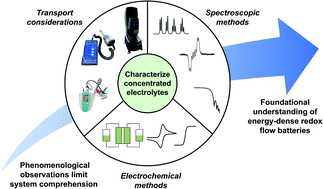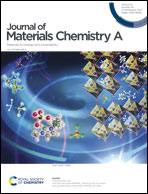On the challenges of materials and electrochemical characterization of concentrated electrolytes for redox flow batteries
Abstract
High concentration electrolytes are of growing interest in energy storage technologies, such as redox flow batteries, where multimolar active species concentrations are believed to be necessary for economic viability. However, conventional approaches for materials and electrochemical characterization of multicomponent solutions often assume dilute conditions and, consequently, are challenged by the molar-scale concentrations of redoxmers (e.g., organics, coordination complexes) and supporting salt. Further, emergent behaviors (e.g., solution structuring, molecular aggregation, phase changes) can be present at elevated concentrations, which confound traditional interpretations. Accordingly, different methods and techniques are required to determine electrochemical and transport descriptors and to link these macroscopic properties to microscopic phenomena. In this perspective, we describe the need for and difficulties inherent to experimental measurements of concentrated electrolytes; we highlight recent progress in terms of scientific insight and method development; and we suggest new directions for the research community with a particular focus on nonaqueous redox flow batteries.

- This article is part of the themed collection: In Memoriam of Susan A. Odom (16 November 1980 – 18 April 2021)


 Please wait while we load your content...
Please wait while we load your content...